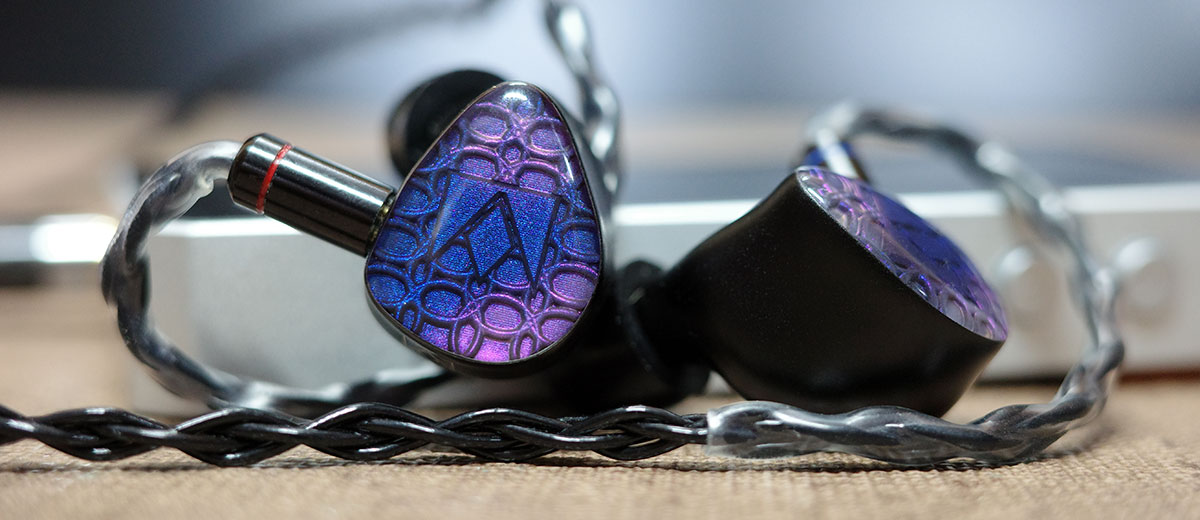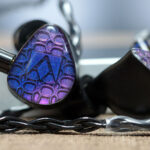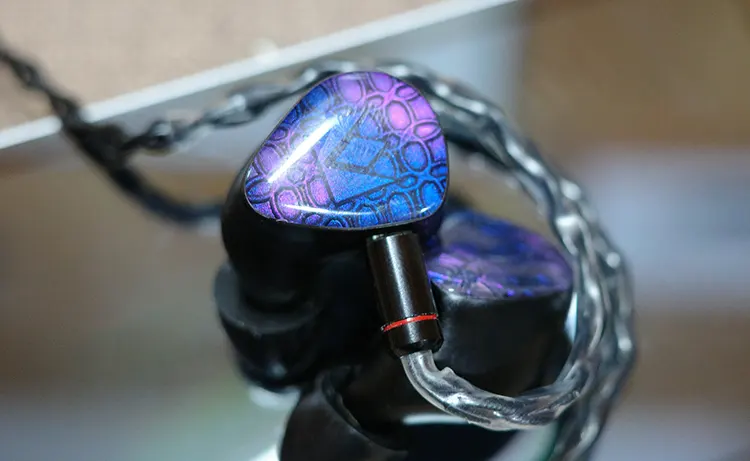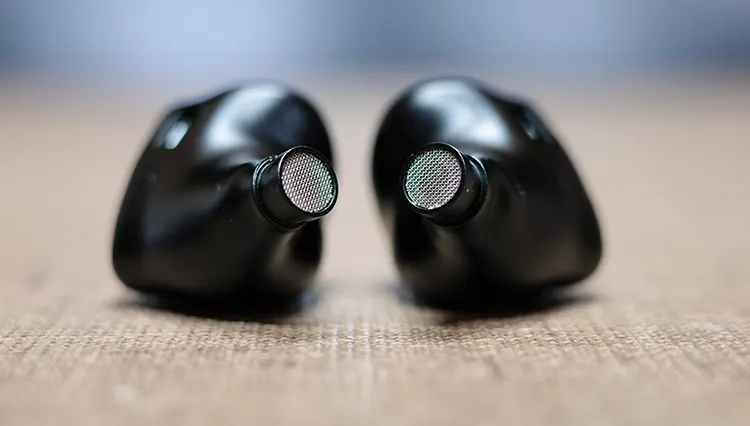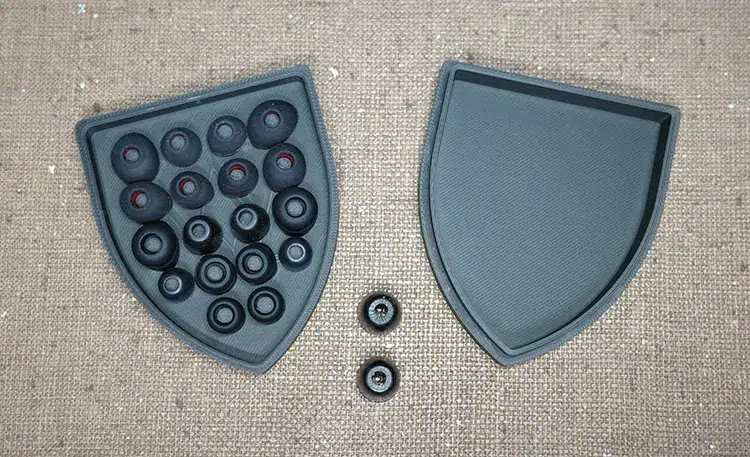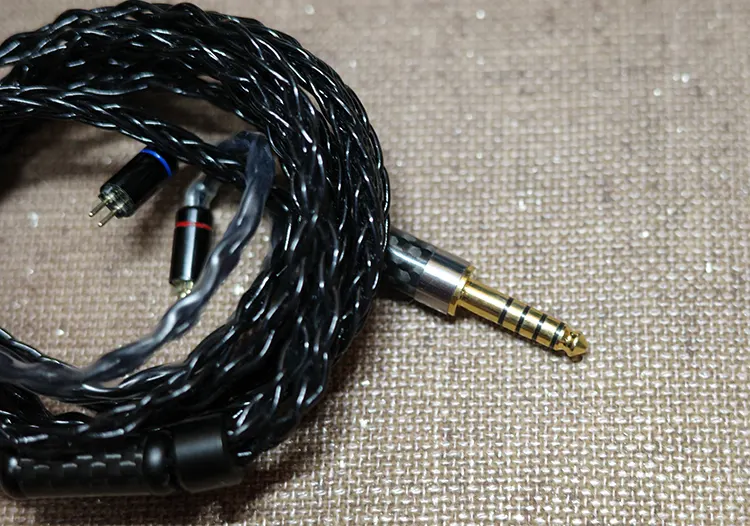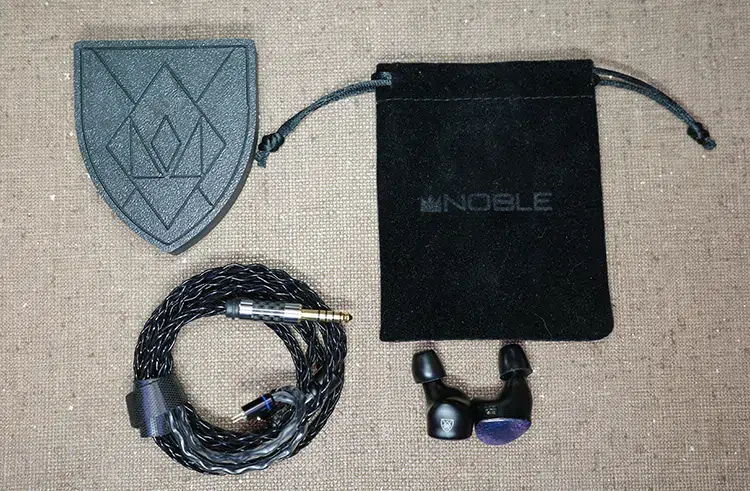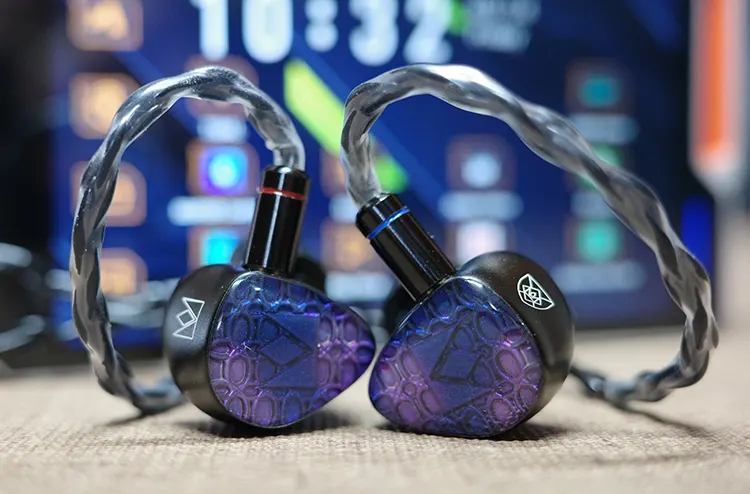Lynn reviews the Noble Audio Knight, an affordable tribrid IEM with a 10mm dynamic driver, single BA, and Piezo super tweeter configuration. It is priced at $289.
Disclaimer: This sample was sent to me in exchange for my honest opinion. Headfonics is an independent website with no affiliate links or status. I thank Noble Audio for their support.
Click here to read more about Noble Audio products we have previously featured on Headfonics.
This article follows our latest scoring guidelines, which you can read in more detail here.
I used to own some Noble Audio IEMs, appreciating the sound qualities of their house sound, much like I do with the recently released wireless headphones, the FoKus Apollo.
There is a reason the “Wizard” is part of Noble lore, and their TOTL IEMs are still highly sought after. The Knight has three distinct driver types, specializing in separate frequency ranges, allowing each to carry the show within the overall scheme.
Settling into the affordable bracket, the $289 Knight comes with high hopes it can capture that famed Noble tuning at a much more affordable price.
I found out how well it performs against the new ‘upstarts’ such as LETSHUOER’s Cadenza4 and Kiwi Ear’s KE4 in my full review below.
Features
The Noble Audio Knight is a tribrid design with three distinct drivers. A dual magnet 10mm dynamic driver with a composite diaphragm handles the lows, a Sonion balanced armature for the midrange, and a piezo super tweeter for the upper regions.
The Knight has an impedance rating of 26Ω and an SPL of 104 dB/mW, making it a relatively easy monitor to drive from a wide variety of sources, including dongles and DAPs.
Design
The Knight’s aluminum shell is form-fitting with an ear nub that helps to keep the IEM in place when properly fit. While keeping the overall weight down, the shell is connected to a three-dimensional-effect acrylic faceplate.
The beautiful dark blues and purples change hues when you turn the IEM, much like a car or truck with a metallic paint scheme. Plus, purple has been the color of nobility throughout the ages.
The shells are a bit larger than I would have liked, compared to others I have reviewed recently. However, they did not move about and stuck out only marginally. The matte black of the aluminum shell also does not carry fingerprints, which is a huge positive in my book.
Connected via 0.78mm 2-pin, the gloss black cable has no microphonics while laying well. Tightly wound 8-strand braids add to the appeal while helping the cable lay without tangling.
The cable cinch is quite hard to move, so I advise being careful. That said, I normally do not use them and keep the cinch right above the Y-splitter.
The jack and Y-splitter are made of carbon fiber, adding to the quality look. The Knight logo embossed on the aft side of the shell and silver-colored mesh covering add to the look.
Comfort & Isolation
The larger IEM still fit well in my average-sized ears, and with proper adjustment, they sat out only slightly. The ear nub helped to keep the Knight in place without adding any pressure to the fit, as can happen sometimes.
The long shrink-wrapped ear guide allows the Knight to fit exactly where one wants. The form-fitting sleeve is compliant and soft while also holding its shape around one’s ear.
Sometimes ear guides can pinch the top of your ear if it is too rigid. The Knight is not one of those times, and I could wear the unit for long listening sessions without bother.
Tip choice will alter fit, sound quality, and isolation. Fortunately, the Knight comes with a plethora of options in silicon and foam in three options: single and double flange, and the aforementioned foam tips.
A nice change for the foam tips is a decreasing radius conical shape, which allows for a deeper insertion without adding pressure.
I found the large foam tips worked best for me sound and fit-wise. Isolation as a result was perfect, keeping unwanted distractions outside the listening chamber. I also found that resolution increased with the foam tips, which seems counter to many past experiences.
Ear Tips
Coming in a Noble Audio Knight crest-laden plastic case, the ear tips present a “knightly” look for the user. The thin case is eminently carriable, allowing you to change quickly with minimal space taken up for storage.
The ear tips come in three shapes: “balanced” silicon with a medium-sized bore opening, dual flange “treble enhanced” shape with a larger bore opening, and three sizes of decreasing radius conical-shaped foam presenting a “bass-enhanced” sound that also has excellent resolution.
I will add that the foam tips tend to spin around on the nozzle but never disengage due to the lip on the IEM. As a result, rolling the tip for proper fit took a concerted effort.
Distinctive sound differences were had between the three, which isn’t always the case. Care was taken to present different signatures for the user, which I appreciated.
Stock Cable
The 8-strand woven OFC silver-plated cable has a tight braid, which I like. Some cables that represent the higher end come more loosely wrapped, but the stock Knight cable is tightly wound, which I appreciated.
No microphonics were had, even with the plastic sheath coating the wires. There was a small amount of stiction, which could account for the proper laying and lack of microphonics.
The makeup of the cable reminds me of a larger version of a competitor’s stock cable. I like this one better.
The Knight cable comes with a straight 4.4mm balanced jack that has a tight-fitting rubber grommet to keep the cable in place.
From the looks, it seemed to be not inserted completely, but upon closer examination, I found the extra part was for protection as well as to keep the cable in place.
Packaging & Accessories
The Noble Audio Knight comes in packaging fit for a king. The slide-off sleeve has the requisite information, and the inner box opens side-to-side like a sacred book.
The first look inside is the shield-shaped case for the tips, with the IEMs wound gracefully above. Lifting the medium weight foam insert, you find the velour bag, warranty card, and cleaning tool. Call it elegantly simple in presentation yet understated as well.
If there is a downside to the presentation, it is the velour bag. While it works, and I understand why it’s included, a hard case would have been appreciated.
That said, the bag does its job without bother, and it is quite easy to put the IEMs in and take them out.
Sound Impressions
The sound impressions were made using the FiiO JM21 and HiBy R4. I used the “large” conical foam tips and the stock cable for most of the review.
Summary
The Noble Audio Knight comes across with a deep reach to the bass, along with an immersive sound that engages the listener to experience the music rather than dissect it.
The piezo up top handles the treble notes with alacrity but with a smoothness to it that differs from some previous iterations of the technology.
This does not mean the Knight is boring, but instead that engagement draws the user into the experience with a natural tendency bordering on organic with a sumptuous midrange tying the signature together.
A mostly cubic soundstage adds to the experience, with the height and depth slightly better than the width.
Bass
Contrary to some, I get a good push down low with a control that keeps any discrepant reverb in check. Impactful but with excellent control, keeping any looseness in check, the bass lays a solid foundation from which to build.
Along with that impact comes excellent clarity to the low end notes. Detail retrieval is very good but not on par with more expensive offerings from Noble (a small trade-off in my book).
This leads to very little bleed into the mids unless the sound engineer has bred that into the music.
The control shows its mettle here, and it is easy to separate the lows from the surroundings, but not in an expanding method. Controlled separation, allowing the bass to shine as part of the show.
Mids
The Sonion balanced armature hits the right balance between peaky and lush with a transparent aspect that allows individual instruments, such as guitar struts, to shine. Vocals come across with excellent detail retrieval as a result.
The resolution, combined with the lower-mid warmth (tying nicely to the low end), keeps it all in check but at the expense of true vocal clarity.
While vocals can indeed shine, there is a bit too much warmth for accurate precision. In some genres, such as jazz, this is a desired trait, but in others, not so much.
I find the combination above perfectly acceptable across most of what I would listen to, and I found an appreciation for more than my typical listening experiences.
Treble
The resonant tonality up top can lead to excellent extension but also become a bit too sparkly.
I will admit that I have issues with piezo drivers due to perpetual treble hearing loss, but the Knight comes as close to me appreciating the technology as any I have heard.
This is one piezo that never comes across as too piercing (thankfully) but instead comes across as fully capable of presenting a competent top end without imbuing too much personality to it.
One might think this would be boring, but instead, this allows the signature of the music to present itself naturally without any artificial input that can happen in the treble range.
Staging & Dynamics
The 3D effect of the soundstage delivers a nearly cubic platform. Instead of a simple square, the shape is reminiscent of a longer, taller small venue that a perfect cube. This allows the spatial character of the presentation to come across as more defined to me.
Instead of a perfect plane where all meets in unison, that depth and height allows for the instrumentation to show across the space instead of WITH the space if it were purely cubic.
I would call it “non-linear,” which describes perfectly how one hears the music in the Knight. Thus, the music can be enjoyed via the singular experience of instruments or combined with better spatial characteristics.
Putting all of this together, you get an IEM that has excellent depth, allowing imaging and separation to come across in a 3D aspect.
Click on page 2 below for my recommended pairings and selected comparisons.

